
Picture this: you walk into your living room after a chaotic day, and instead of feeling overwhelmed by clutter and competing colors, you’re greeted by a sense of calm that seems to wash over you instantly. That’s the magic of minimalist designate doesn’t just change how your space looks; it transforms how you feel in it.
I’ve spent the last two decades helping homeowners discover that less truly can be more. Through countless client transformations, I’ve learned that minimalism isn’t about creating sterile, cold spaces. Instead, it’s about being intentional with every choice, allowing each element to serve a purpose while contributing to an overall sense of serenity.
Today, I’m sharing five powerful minimalist living room ideas that have consistently delivered stunning results for my clients. These aren’t just design tips they’re space transformation strategies that will help you create a room that feels both sophisticated and deeply peaceful.
1. Master the Art of the Neutral Color Palette
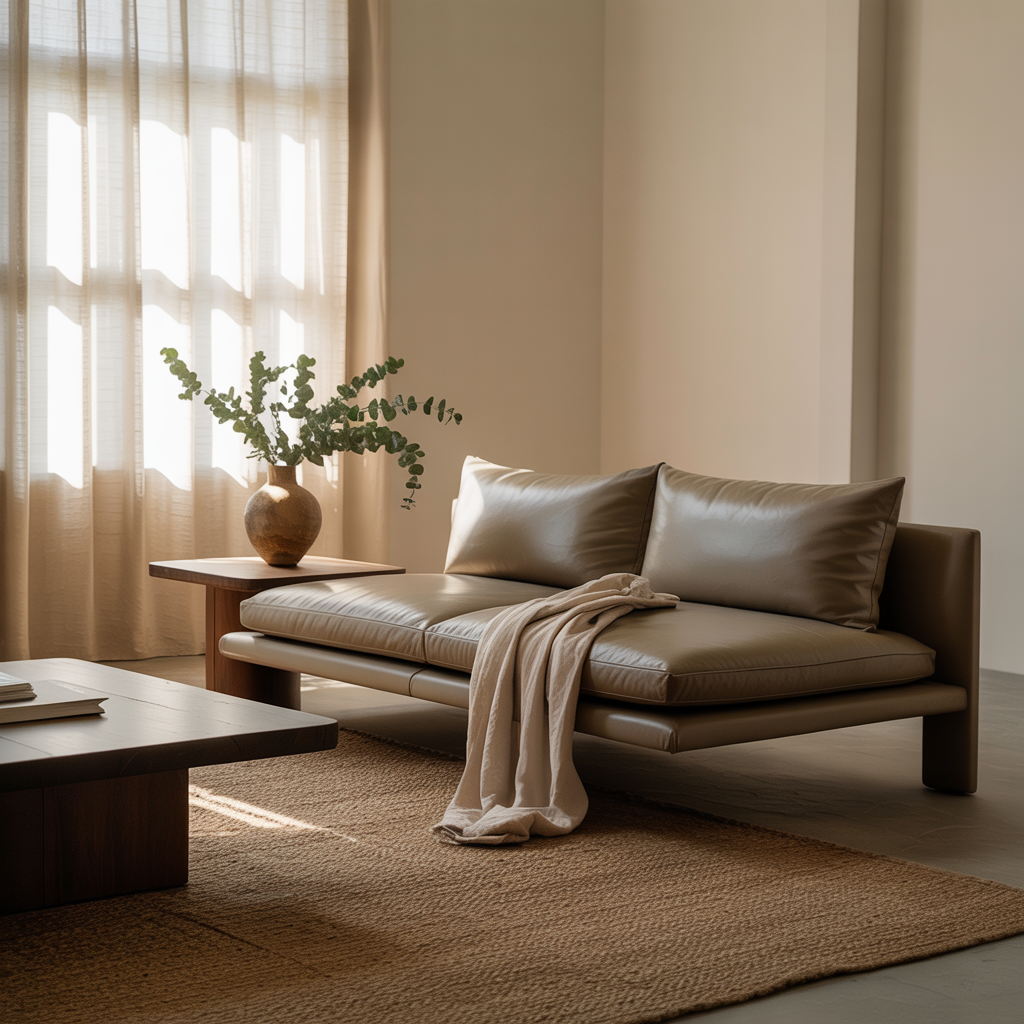
The foundation of any successful minimalist living room starts with color or rather, the thoughtful absence of competing colors. When I work with clients who feel overwhelmed by their current space, the first thing we tackle is creating a cohesive neutral palette that serves as a calming backdrop.
Think beyond basic white and beige. Today’s most successful minimalist spaces embrace warm grays, soft taupes, and even muted sage greens. The key is selecting two to three colors maximum and letting them flow seamlessly throughout the room.
I recently worked with Sarah, a busy marketing executive, who had painted each wall a different color thinking it would add personality. The result? Her living room felt like a circus. We transformed her space using warm white walls, charcoal gray accents, and natural wood tones. The change was remarkable she told me it felt like coming home to a luxury spa every evening.
Here’s what works: choose one primary neutral for your walls, select a slightly deeper shade for accent pieces, and introduce one natural element like wood or stone. This creates depth without chaos, sophistication without sterility.
2. Embrace Functional Furniture That Multitasks
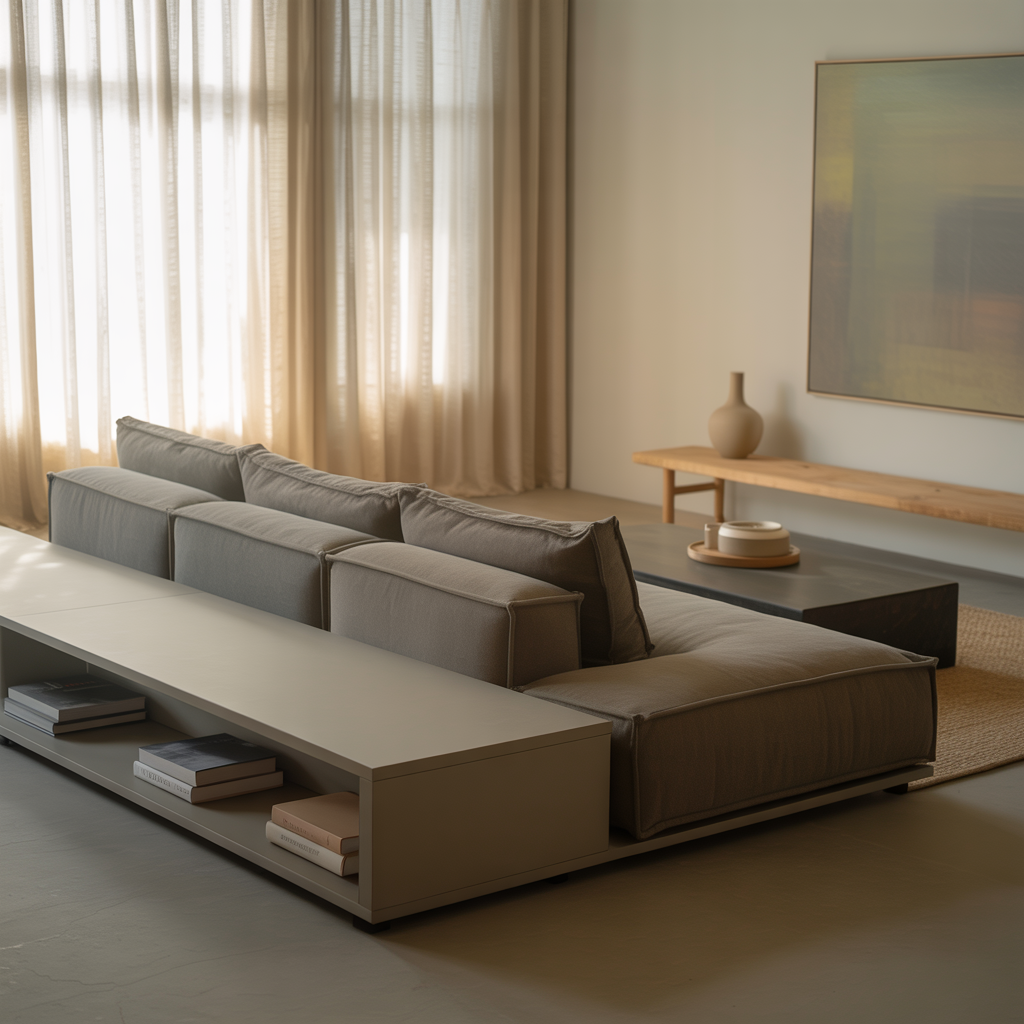
In minimalist design, every piece needs to earn its place in your room. This doesn’t mean sacrificing comfort or style it means choosing furniture that works harder for you.
The secret lies in selecting pieces that serve multiple functions while maintaining clean lines. That ottoman isn’t just a footrest; it’s hidden storage for blankets and magazines. Your coffee table doesn’t just hold your morning cup; it features a lower shelf for carefully curated books or a hidden drawer for remote controls.
When selecting furniture, I always tell my clients to ask three questions: Does this piece serve at least two functions? Does it complement my color palette? Will I still love looking at this in five years? If you can’t answer yes to all three, keep shopping.
Consider investing in a sleek console table that doubles as a media center, or a minimalist sectional with built-in storage compartments. These choices eliminate the need for additional furniture pieces while maintaining the clean aesthetic that makes minimalist spaces so appealing.
3. Harness Natural Light as Your Primary Design Element
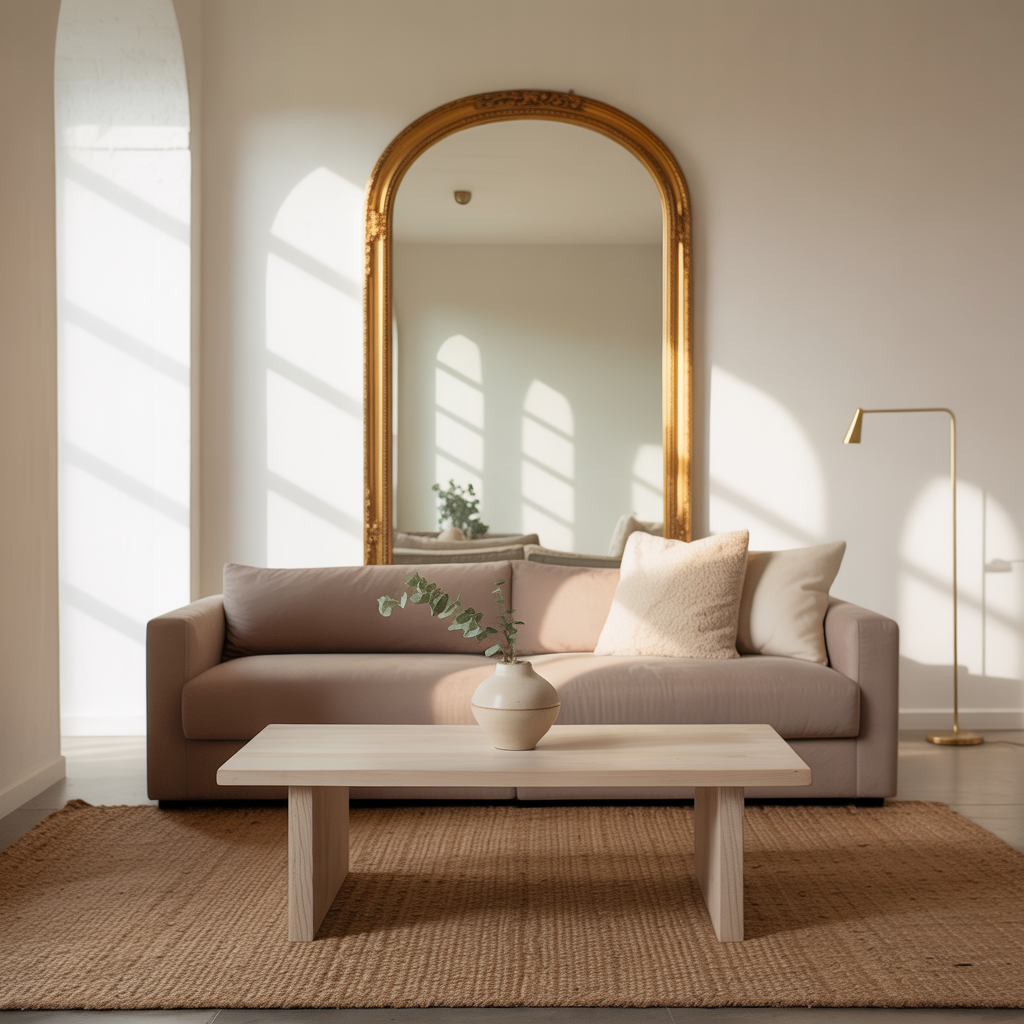
Nothing transforms a minimalist living room quite like abundant natural light. It’s free, it’s beautiful, and it makes even the smallest spaces feel expansive and inviting.
The goal is to maximize every ray of sunlight that enters your room while maintaining privacy and style. This means rethinking your window treatments entirely. Heavy drapes and busy patterns work against minimalist principles, creating visual weight that competes with your carefully curated space.
Instead, consider sleek roller blinds in natural fabrics, or better yet, sheer panels that filter light without blocking it entirely. If privacy isn’t a major concern, leaving windows completely unadorned creates the most dramatic impact.
I once transformed a client’s dark, cramped living room simply by removing heavy curtains and replacing them with white linen panels hung close to the ceiling. The room instantly felt twice as large and infinitely more peaceful. We also strategically placed a large mirror opposite the main window, effectively doubling the natural light in the space.
Remember, artificial lighting should complement, not compete with natural light. Choose fixtures with clean lines and warm bulbs that create ambiance without overwhelming the space.
4. Create Impact with One Statement Art Piece
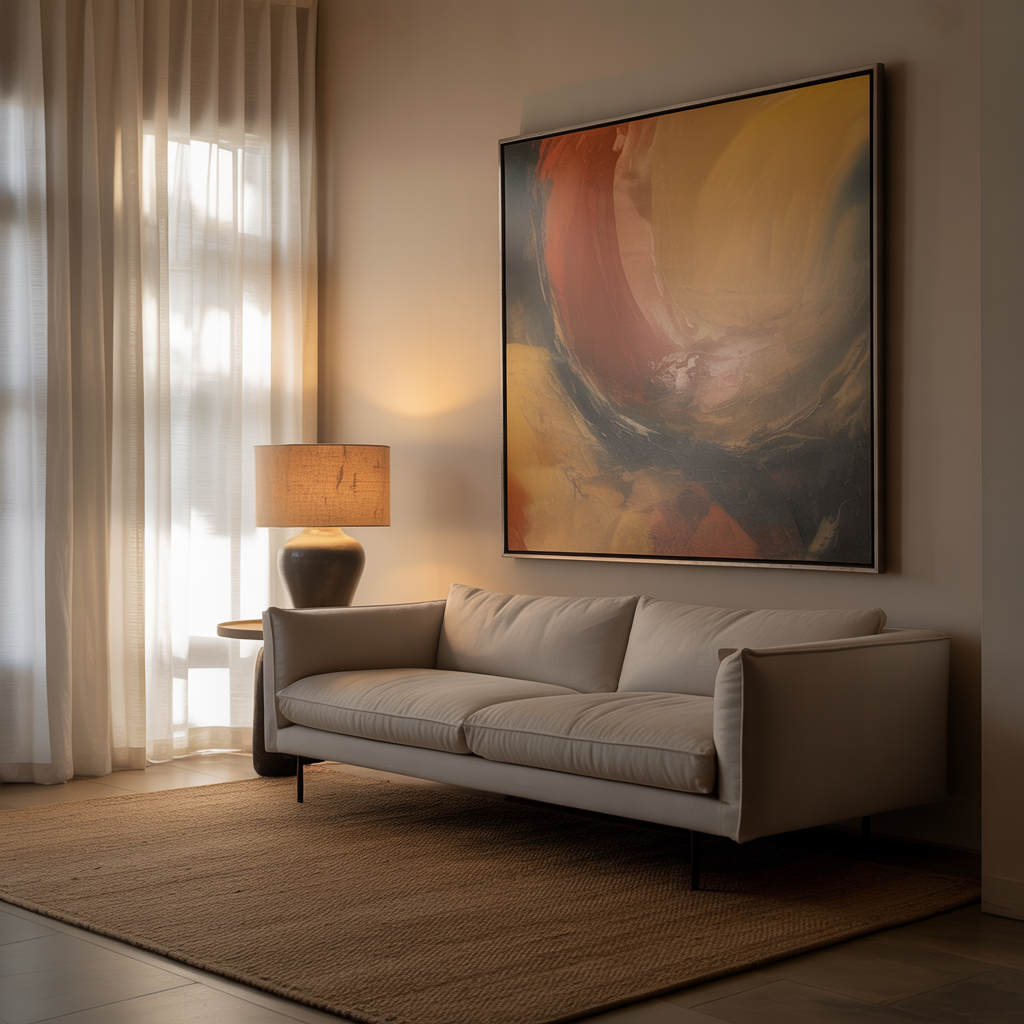
This might seem counterintuitive in minimalist design, but the right artwork can be the element that elevates your space from stark to stunning. The key is choosing one significant piece rather than creating a gallery wall that fragments attention.
Your statement art should reflect your personality while complementing your neutral palette. It might be a large abstract painting in muted tones, a striking black and white photograph, or even a sculptural piece that adds dimension to your space.
The positioning matters tremendously. Your artwork should be the natural focal point of the room—typically above your sofa or the main seating area. It should be large enough to command attention but not so overwhelming that it dominates the space.
I worked with a couple who collected small artwork throughout their travels. Their living room walls were covered with dozens of small pieces that, while meaningful, created visual chaos. We selected their three favorites and created a simple arrangement on one wall, storing the rest in a beautiful album they could enjoy privately. The transformation was stunning their space immediately felt more sophisticated and their favorite pieces finally got the attention they deserved.
5. Introduce Life Through Carefully Selected Greenery
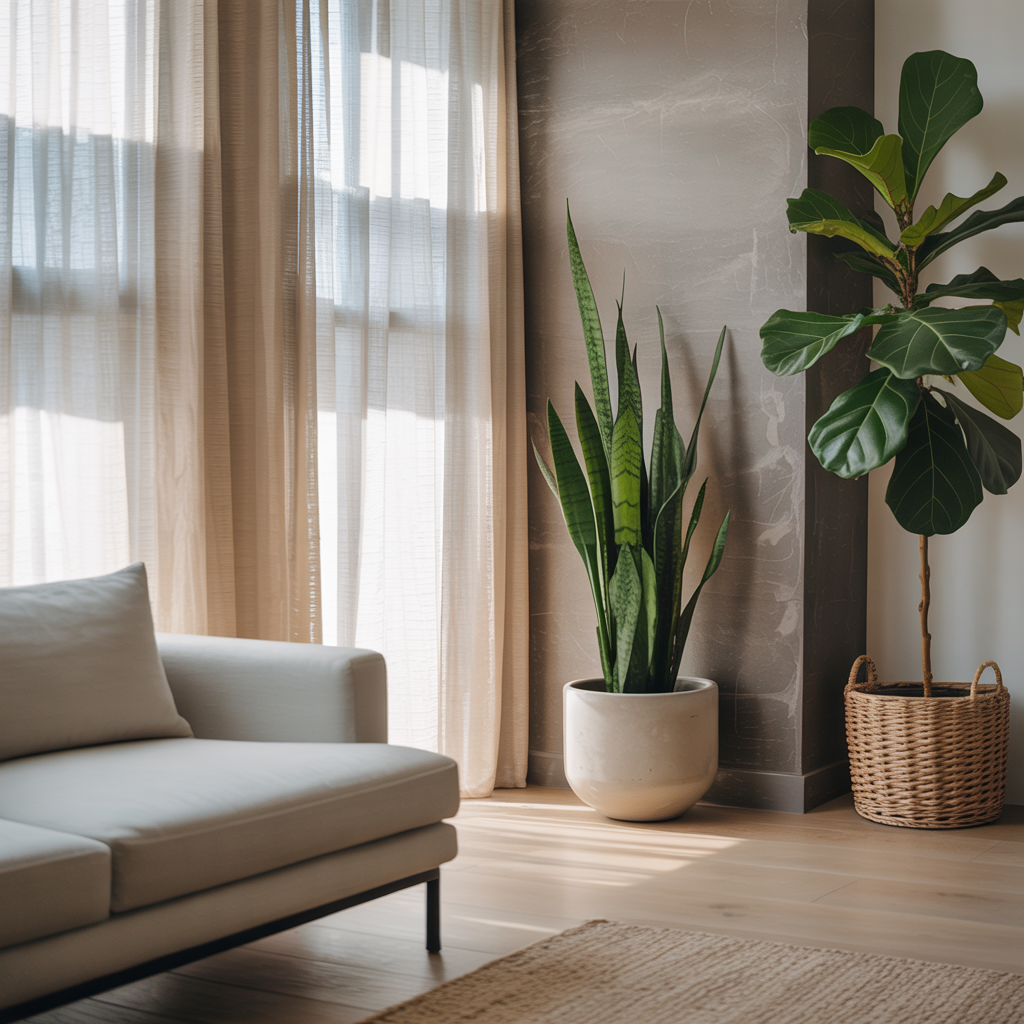
Plants are the perfect addition to minimalist spaces because they bring life and energy without adding clutter or competing colors. The key is selecting plants that complement your design aesthetic rather than overwhelming it.
Choose plants with interesting architectural shapes think snake plants with their striking vertical lines, or a single fiddle leaf fig that adds drama without chaos. Avoid collections of small plants that can make surfaces feel busy.
The containers matter just as much as the plants themselves. Select planters in materials that complement your existing decor ceramic pots in neutral tones, sleek metal containers, or natural woven baskets. The goal is for your plants to feel integrated into your design, not like afterthoughts scattered throughout the room.
Consider the maintenance factor as well. Minimalist living is about reducing stress, not adding the burden of complicated plant care routines. Choose varieties that thrive with minimal attention, allowing you to enjoy their beauty without constant worry.
Your Space, Transformed
These five elements work together to create something greater than the sum of their parts. When you master the neutral palette, choose functional furniture, maximize natural light, select meaningful artwork, and introduce life through plants, you’re not just decorating you’re creating an environment that supports the lifestyle you want to live.
The beauty of minimalist design lies in its flexibility. Start with one element that resonates most with you, whether that’s clearing surfaces to embrace natural light or investing in that perfect statement art piece you’ve been considering. Each change builds momentum, making the next step feel natural and exciting rather than overwhelming.
Remember, minimalism isn’t about having less for the sake of less—it’s about making room for what truly matters. In your transformed living room, every element will have purpose, every choice will be intentional, and every moment spent in the space will reinforce the peace and clarity you’ve worked to create.
Your minimalist living room transformation starts with a single decision to prioritize intention over accumulation. Which of these five ideas will you implement first?

Add a Comment